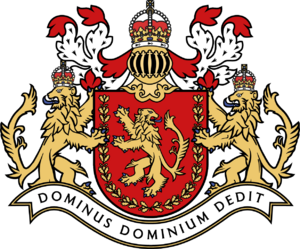Home Service (Great Nortend): Difference between revisions
No edit summary |
|||
| Line 13: | Line 13: | ||
==Organisation== | ==Organisation== | ||
The Home Service is organised at a local | The Home Service is organised at a local complatoon level. Several platoons from a particular region are grouped together as a company, and often undertake exercises together. Several companies form a battalion, which is attached to the local county regiment or corps. | ||
Home Service battalions form part of the regimental hierarchy of their attached county regiment or corps. Hence, they answer to the Regimental or Corps Head-Quarters (RHQ/CHQ) and thence to General Head-Quarters (GHQ) of the regular forces. | Home Service battalions form part of the regimental hierarchy of their attached county regiment or corps. Hence, they answer to the Regimental or Corps Head-Quarters (RHQ/CHQ) and thence to General Head-Quarters (GHQ) of the regular forces. | ||
Revision as of 05:19, 11 November 2020
| Home Service | |
|---|---|
 | |
| Active | 8 June 1936 — |
| Country | |
| Role | Civil and military defence |
The Home Service is the voluntary land reserve branch of the Royal Army of Great Nortend, comprised of the Militia, Yeomanry and Auxiliary of the infantry, cavalry and auxiliary divisions respectively. It is tasked with supporting the regular army as well as response in civil emergencies. The Home Fleet is the naval equivalent.
Home servicemen are obliged to attend weekly parade nights and up to a fortnight of training exercises annually. Home servicemen cannot be deployed abroad in combatant roles except in times of war and are thus nicknamed the “Marching Boys”.
Organisation
The Home Service is organised at a local complatoon level. Several platoons from a particular region are grouped together as a company, and often undertake exercises together. Several companies form a battalion, which is attached to the local county regiment or corps.
Home Service battalions form part of the regimental hierarchy of their attached county regiment or corps. Hence, they answer to the Regimental or Corps Head-Quarters (RHQ/CHQ) and thence to General Head-Quarters (GHQ) of the regular forces.
History
The assent to the Defence of the Realm Act 34 Edm. IX established the modern-day Home Service. The Act combined the former locally raised militias, yeomanries and volunteer corps, which was placed under the command of the War Office. Later acts integrated the Home Service with the regular Royal Army by creating integrated regiments and corps containing both regular (including mustermen) and reserve battalions.
21st century
The Home Service shifted its focus after the 2007 Whenton Report back to its original principles of local military and civil defence after a slow decline in their military role leading to some platoons even regularly leaving rifles at home. Since 2008, Home Service companies have participated in regular major exercises domestically and abroad. Furthermore, they retain their on-going responsibility for the defence of critical local infrastructure such as water works, gas plants and electricity mills, as well as response in emergency scenarios such as fire, severe flooding, snowfall, storms, riot or invasion.
Personnel
Home Service units have a wide mix of ages, from young men fresh out of muster service to retired ex-soldiers. After compulsory muster, there is the option of continuing in the Home Service. Those who do not join immediately after muster service may join up later on, and many retired ex-soldiers also volunteer as home servicemen. Those exempt from muster, such as farm labourers, also often join up as home servicemen, although manual labourers specifically do not usually remain in the Home Service for very many years owing to the nature of their work.
Women may also join the Auxiliary service as officers, similar to the regular Army. They primarily are drawn from the middling class nursing, clerical, teaching or secretarial professions, and may serve in non-combatant roles.
Home servicemen normally wear duty dress or field dress. Uniforms have shoulder patches with the words, “Home Service”. Field dress uniforms additionally have platoon, company and battalion patches whilst duty dress uniforms have arm-bands with the same information.
Home servicemen are paid according to rank and branch, starting at £1/1/- per full day served, and up to 10 shillings per drill night for a private.
Requirements
A person is required to fulfil the following criteria to be eligible to join the Home Service.
- Full Erbonian subjectship.
- Between 17 and 50.
- Of sound and sobre character.
- Physically able.
- Military disposition.
- Of the Church of Nortend.
There is no maximum age limit for service; however, a home serviceman will be forced to retire or leave if he fails to maintain sufficient physical ability to service in the Home Service. A home serviceman must also fulfil his obligations to the Home Service.
This page is written in Erbonian English, which has its own spelling conventions (colour, travelled, centre, realise, instal, sobre, shew, artefact), and some terms that are used in it may be different or absent from other varieties of English. |
